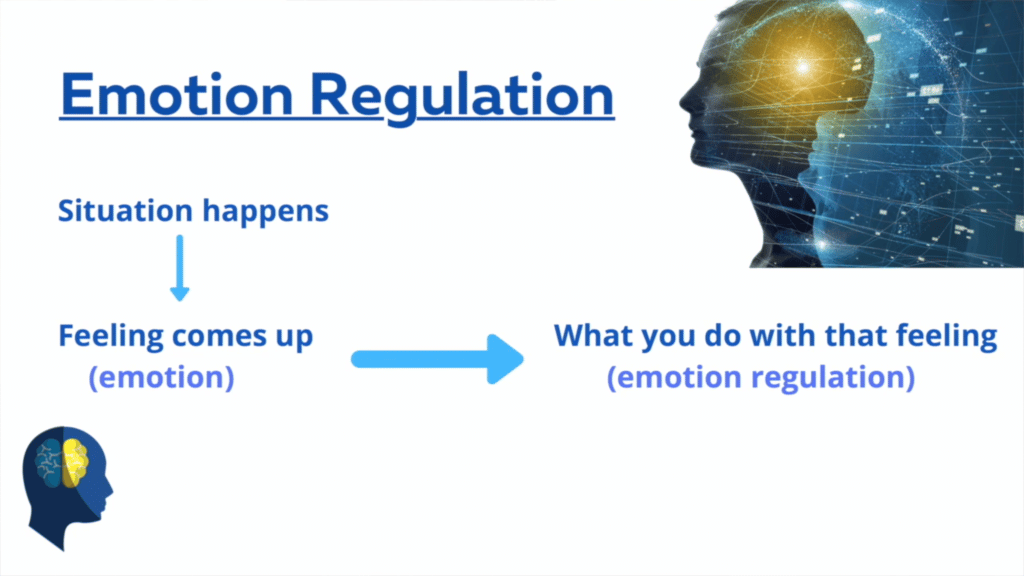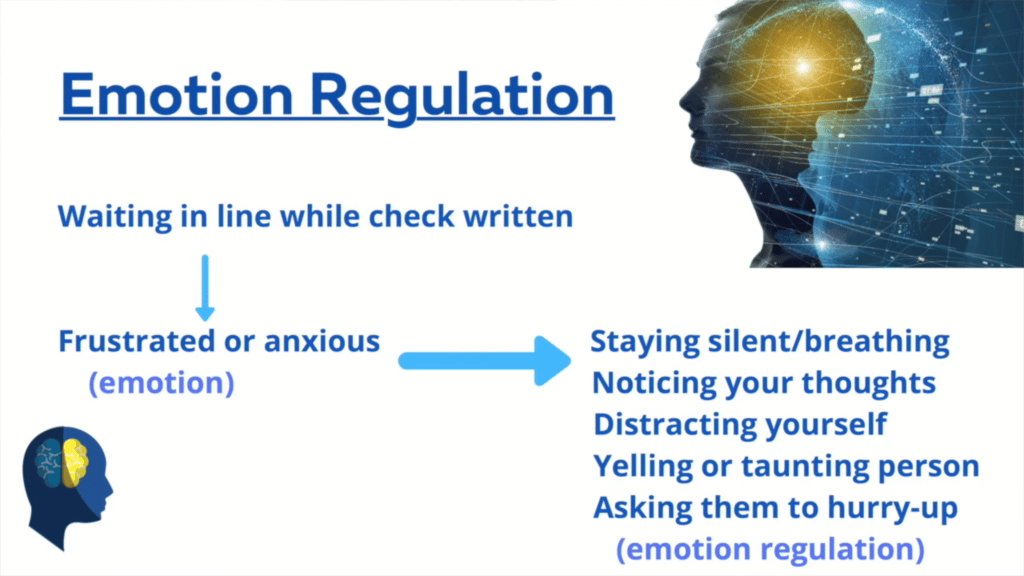The experience of our emotions and what we do with them are shown to be two different things.
One example is feeling anger versus expressing that anger to others. How we manage our emotions is often referred to as “emotion regulation”.
Welcome back, I’m Dr. Matt B and these are your Emotional Minutes. Today we will be talking about emotion regulation. What is emotion regulation? Regulation is a fancy term for the ways people deal, cope, or control their emotions in response to situations.
Defining Emotional Regulation
When we talk about regulation, we mean our emotional responses and the ways we act based on our emotions. For example, you might feel very angry and yell or act out at someone. The feeling of anger itself is different from the action of yelling or acting out. There’s the emotion in terms of what we experience internally and then there’s how we react and deal with it.

Example of Emotional Regulation
One example of this is feeling angry when you’re in line at the grocery store and you’ve got somewhere to go. This can be frustrating in and of itself. But then a person in front of you starts digging through their bag and pulls out a check. Who writes a check these days, right? But, of course, you start to feel a lot of frustration.
Whether or not you voice or express your frustration is how you might regulate your emotions in that situation. The emotion itself would be feeling frustrated, but the regulation is what you do with that emotion. Over time, we form patterns that are almost automatic for the ways that we deal or cope with emotions.

A lot of research to suggests that our patterns of regulating and responding to emotions changes for every situation. Some ways we regulate emotions are related to clinical disorders that people may experience, such as anxiety, depression, or post-traumatic stress.



